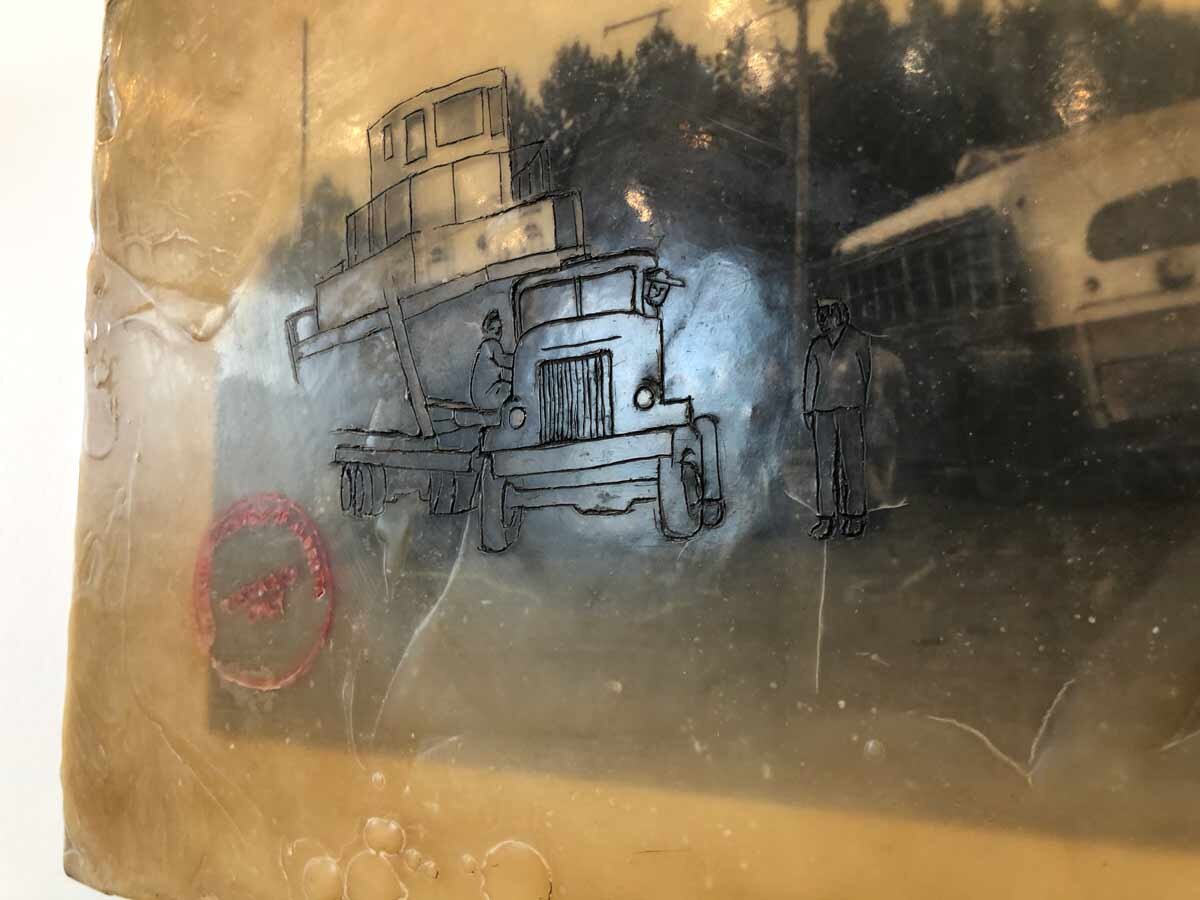 Image 1 of 6
Image 1 of 6

 Image 2 of 6
Image 2 of 6

 Image 3 of 6
Image 3 of 6

 Image 4 of 6
Image 4 of 6

 Image 5 of 6
Image 5 of 6

 Image 6 of 6
Image 6 of 6







Boat and Trolley Bus (614/1)
Series: Do Not Remove Series, archive photos from 1943
Medium: Acrylic, gel transfer, oil and encaustic wax on masonite
Dimensions: 12.5” x 10”
Date: 2010-2012
Series: Do Not Remove Series, archive photos from 1943
Medium: Acrylic, gel transfer, oil and encaustic wax on masonite
Dimensions: 12.5” x 10”
Date: 2010-2012
Series: Do Not Remove Series, archive photos from 1943
Medium: Acrylic, gel transfer, oil and encaustic wax on masonite
Dimensions: 12.5” x 10”
Date: 2010-2012
I found the photos in this series in an unlabelled folder at the provincial archives, and the seemingly random nature of the subjects drew me to them. I imagine what life was like during the time that these photos were taken. They are from the WWII era, at a point when industry and roles in society were dramatically changing.
For me, reproducing these photos and then covering them in layers of wax is a way to demonstrate my desire to preserve the memories in these photos. I've carved into the wax layers, tracing over the forms, and then rubbing oil paint into the lines to outline and highlight the important subjects in the photos, and make sure they don't get lost under the layers. These photos were all clearly stamped by the archives with "DO NOT REMOVE" and "RESEARCH ONLY," and I've maintained these instructions in my paintings, echoing a sentiment that these not be removed (from our collective conscious), but instead used as for research or reflection.
ABOUT ENCAUSTIC
These encaustic paintings are made with beeswax and oil paint. I paint in layers, fusing each layer with heat. Beeswax is impervious to moisture, it will not deteriorate, yellow or darken. Encaustic paintings do not need to be varnished or protected by glass.
CARE INSTRUCTIONS
Consistent Temperature: Hang and store at normal room temperatures. Avoid freezing and extremely hot temperatures — was will melt at 150ºF / 65ºC.
Avoid direct sunlight: Keep all artwork out of direct sunlight.
Transporting: When transporting or storing an encaustic painting, cover the face of the painting with wax paper.
Framing: Encaustic does not need to be protected by glass.
Curing: These encaustic paintings have cured for mare than 12 months, so they should not ‘bloom’. A bloom is a naturally occurring hazy white residue, and occurs when an encaustic painting is curing (between 6-12 months). Bloom may occur again if a painting is exposed to cold, but can easily be removed by buffing the surface with a soft, lint-free cloth or pantyhose.
Cleaning: If the original sheen has become dull over time, it can be brought back by repeating the buffing process, gently rubbing the surface with a soft, lint-free cloth or pantyhose.